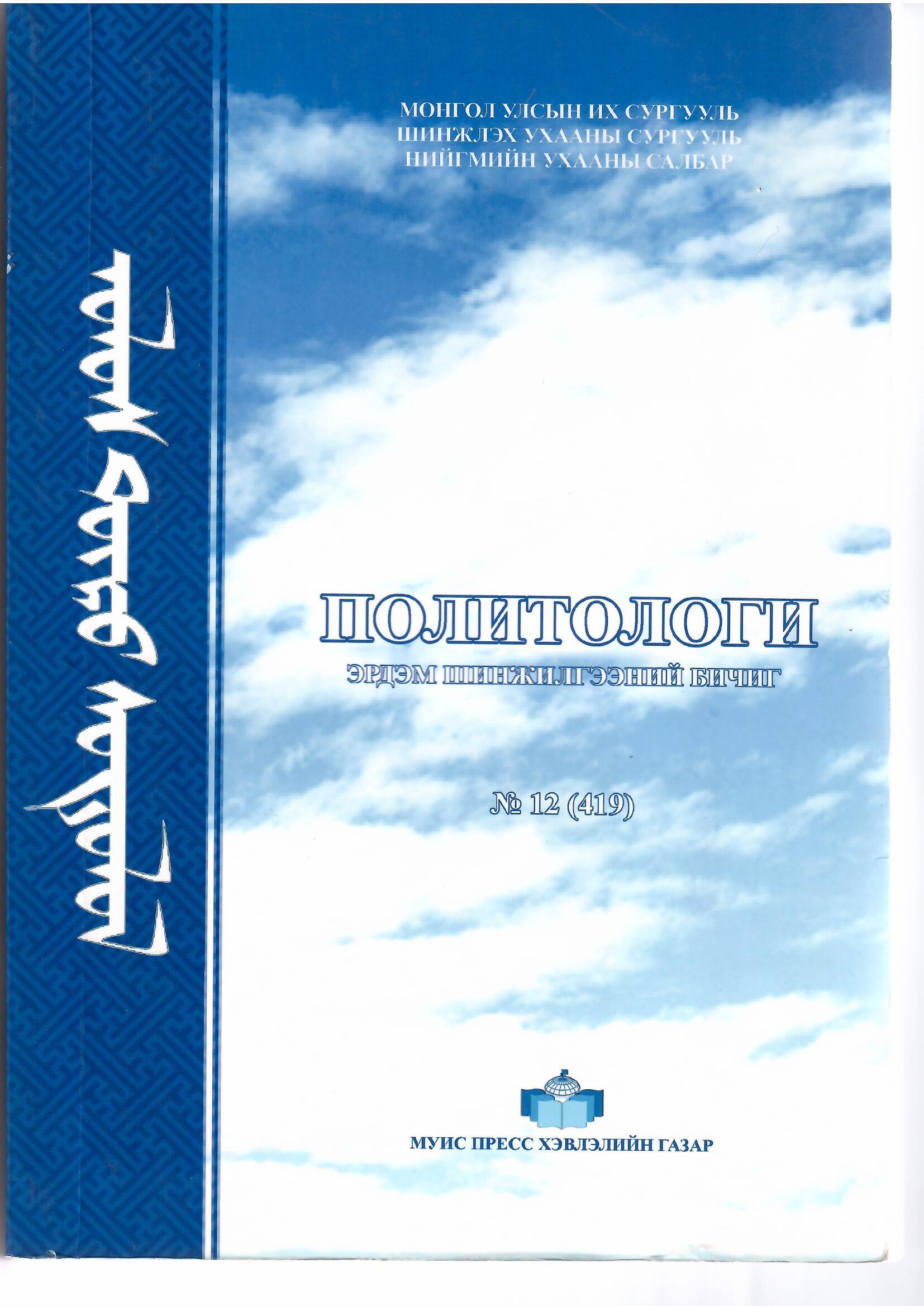УЛС ТӨРИЙН ХОШУУЧЛАГЧИЙН ИМИЖ
Keywords:
Улс төрийн имиж, хошуучлагчийн имиж төлөвшил, PR, олон нийтийн харилцааAbstract
Энэхүү өгүүллээр орчин үеийн улс төрийн хошуучлагчийн имиж төлөвшлийн онол, үзэл баримтлалын суурин дээр, нэр дэвшигчдийн сурталчилгаа, олон нийтийн санаа бодлын хандлагын талаар авч үзсэн болно. Ингэхдээ сонгогчид болон сонгуульд нэр дэвшигчидийн, хошуучлагч хийгээд олон нийт дэмжигсэд хоорондын харилцааг тодотгож байгаа имижийг улс төрийн шинжлэх ухааны үүднээс судалж, үүнийгээ гадаадын орны болон Монгол орны жишээн дээр авч үзсэн чухал ач холбогдолтой юм.
Abstract: Images have consistently been accused of having enormous power over human minds, as in Plato's parable of the cave. Contemporary democratic politics are often characterized as "image politics", in which style matters more than substance, and personalities more than policies. Citizens and electorates are said to be in the thrall of political images. Whereas in the cases of Fascist Italy and Nazi Germany such image politics have been considered as symptomatic of those pathological political forms, they are often regarded as pathologies of democratic politics that should be eradicated or contained. Arguments about the deleterious effects of images on politics often entail claims that whoever is satisfied with such politics is subject to the mystification of ideology or idols. Those who cannot see through the images that dominate politics, according to these critiques, know no better than to worship idols, to make a fetish of images, or to mistake false images and ideas for reality. In contrast, those who can see through the images appear to themselves to be perspicacious, enlightened and mature.




